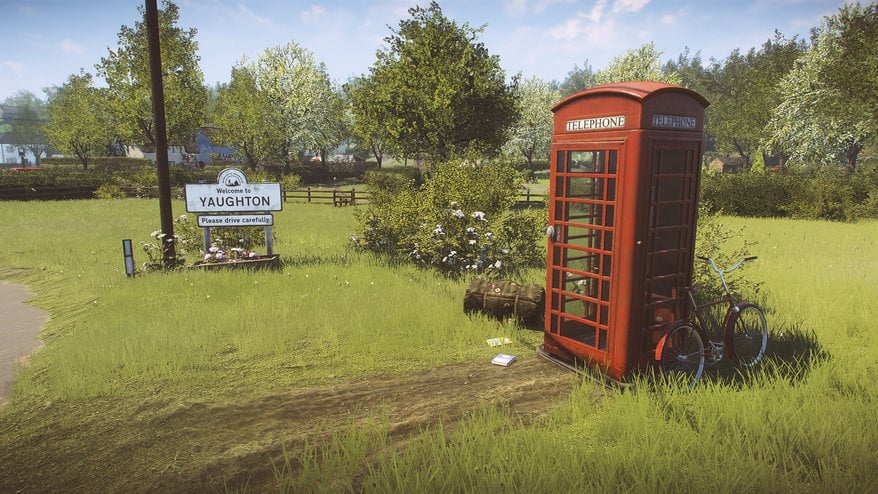

Everybody’s Gone To The Rapture has at last been confirmed for PC after a long stint on PS4. We suspected it was on its way: the first hint was Rapture’s appearance in a SteamDB listing—an entry that was updated as time wore on. All but confirming things, a recent AMD Radeon driver update listed Rapture support. Now we have the news direct from The Chinese Room: everybody’s coming to the PC.
What we don’t have is a release date, but if AMD is tailoring drivers to Rapture, it can’t be far off. To prove that this isn’t April Fools’ lies, we hit up creative director Dan Pinchbeck for the story behind the transition, accompanied by delightful 4K screens from the PC build.

PC Gamer: Did you always plan on bringing Everybody’s Gone To The Rapture to PC, given your history with the platform, or was this a more recent decision?
Dan Pinchbeck: We always wanted to get it onto PC as it’s kind of our home turf and we’ve got a lot of really passionate, supportive fans on PC. We kept making sure all the way through development that Sony knew that we could do it, and that we really wanted to do it. Around the time Rapture came out on PS4 there must have been an internal discussion at their end, as suddenly it became a possibility, so we jumped at the chance. It’s a bit like coming home—we’re absolutely chuffed to bits it’s going to get a PC release.
PCG: As Sony Santa Monica is a credited developer on the game along with The Chinese Room, did that create any logistical headaches in bringing the game to PC?
DP: The development of the game was all us, with the normal kind of publisher support, so there was no issue with any direct development input from Sony. That definitely kept things simpler. The whole initiative seems geared around third-party studios.

PCG: Can players expect any visual enhancements exclusive to the PC version of Everybody’s Gone To The Rapture?
DP: It’s mainly performance—there’s a framerate cap you can turn off, and with a good rig you can push up to 60fps, and obviously you’ve got scope for much higher resolutions. To be honest with you, we were pushing the PS4 about as far as it will go graphically, so it’s not like there’s massive space for improvement anyway.
What we’re really excited by is the addition of some accessibility features, like a crosshair option for people susceptible to motion sickness; visual assist for hearing-impaired players; and a ‘one button tilt’/simplified event-triggering feature for users with mobility issues. It’s also fully compatible with most controllers and keyboard/mouse, so the core thing for us is that it’s as accessible to as many players as possible.

PCG: Have you guys considered VR support for the PC version?
DP: Not at this point—that would be really complicated given Playstation VR is out later this year. It’s a tough call anyway as Rapture’s just one large open world, so it’s very challenging to cram all that into the kind of performance specs you need. An official VR port would have to be led by Sony of course, but it’s here on PC so you never know.

PCG: The game’s had an amazing response on PS4—to those coming to the game for the first time, how does it build upon the first-person games your studio has made before?
DP: It’s by far the most ambitious game of this type that’s been made to date: it’s properly non-linear, set in one giant open world so you get a much higher degree of agency in terms of storytelling than is normal for walking simulators. It’s not just a corridor with story getting parachuted in to you as you move along, so we think it really pushes the genre forwards again. Exploration is really key here, and you have a lot more choice over where to go and when. That also means you get quite a personal journey, as different parts of the story will mean different things depending on which scenes you’ve discovered, so it’ll really change the way you think about characters, for example.
This also means we can tell a much more complex story—you get to know all of the inhabitants of Yaughton Valley—so there’s a lot more scope for it being character-driven and really deep in terms of emotional storytelling. Again, you get away from this linear path so there’s more chance to engage with characters you like even if they are not central to the plot. So it’s much more like a TV mini-series in that regard, much more about numerous character-driven plot strands all interweaving with each other.
And it really throws back that old argument that walking simulators aren’t proper games. You just simply can’t do non-linear interactive narrative like this in any other medium. It’s about the unique opportunities for storytelling that games provide.

[SOURCE :-pcgamer]
